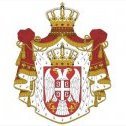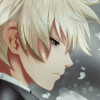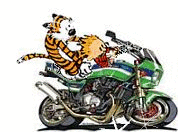Leaderboard
Popular Content
Showing content with the highest reputation on 05/20/2018 in all areas
-
1 point
-
1 point
-
1 pointThe Pastor Preach Husband comes home from Church, greets his wife, lifts her up and carries her around the house. The wife is so surprised and asks smiling, "Did the Pastor preach about being romantic"? Out of breath the husband replies, "No, he said we must carry our burdens..."
-
1 point
-
1 pointHello BOBBY_S, Welcome to CyberPhoenix I hope you enjoy your stay and come back often Please follow CyberPhoenix Rules and if you don't see something you want then use Search We also have a Request Section if you can't find something you want Become a CyberPhoenix VIP for Premium Accounts and alot more Administrator
-
1 pointFifty years ago this month, student protests in Paris morphed into huge demonstrations across the country, in scenes recorded in iconic images by Gilles Caron, Bruno Barbey, and Claude Dityvon Half a century on, the events of May ‘68 still burn in the memories of its provocateurs. Morphing from a frenzy of student protests into a nation-wide revolt, embroiling seven million people at its height, France was dragged out of its post-war complacency that summer and into seven weeks of turbulent action and police brutality. The fire of the rebellion was first sparked on Valentine’s Day, when students of Nanterre University in the Western suburbs of Paris, held a residents’ strike to promote the right to move freely between male and female dorms. The university hesitated over making any change, so on 22 March, 600 frustrated students gathered to occupy an administration building in protest against the old institution’s ageing values. By 02 May, after months of boycotted exams, vandalism, and campus protests, the administration shut down the university. It was a move that reeked of hostility to hundreds of students all across the city, and on 03 May they rallied in the courtyards of Sorbonne University central Paris, hurling whatever they could find at police – who waded in with batons and handcuffs. By the end of the first night of rioting, the police had locked up over 600 students. At the centre of this revolt was Daniel Cohn-Bendit, a young man famously photographed by Gilles Caron (1939 – 1970). Caron’s iconic images of May ’68 – and of other major conflicts of the 60s – are on show at Photo London this weekend, including this portrait of Cohn-Bendit. The rebel stands, with a small but confident grin, opposite the looming figure of a CRS officer [French riot police] in a portrait that Olivier Castaing, curator of the show, describes as an image of confrontation between youths and authority. The image made it to the front pages of the national press the morning after the first night of the barricades but, while they were originally made for the press, Castaing says that Caron’s photographs now find themselves in the artistic field too, giving “importance to photojournalistic images and their aesthetic qualities”. According to Castaing, Caron was a short man of around 5’4”, and in 1968 he was only 28 years old. Naturally he fit in with the protestors, and he also sympathised with them. Tragically, by 1970 he had disappeared on the road between Cambodia and Vietnam, but in five years he had made his mark in the history of photography, says Castaing – producing iconic images of five of the major conflicts of the 60s, including the Vietnam War, the Prague Spring, and of course, May ‘68. Portraits of students flinging cobblestones became a symbolic element in Caron’s photography, but the violence quickly escalated. Parked cars were flipped over to create barricades against the police, who responded by firing swarms of tear gas. Over just a week, what had been a student demonstration had grown to encompass 20,000 people, including teachers, artists, filmmakers and civilians, who flowed out onto the streets of the Latin Quarter demanding that Nanterre University be reopened, and that the charges on the detained students be dropped. “I’ve never seen such violence in a western capital as I saw in Paris that month,” Magnum photographer Bruno Barbey has said – another image-maker whose coverage of May ’68 has become iconic. Shots of the police’s heavy-handed response sparked sympathy for the protestors, he told The Guardian in an article published on 21 August, but it also meant that the photographers became targets. Journalists were chased down the street for their cameras, says Barbey, and – after images of people throwing stones were used as evidence for arrest – the protestors began to view the cameras with suspicion, making it increasingly difficult to document what was happening. Boulevard St Michel Gay Lussac Street, Paris, France Barricade built out of movie posters, Rue de Lyon, near the Bastille, Paris, France On the Barricades on Boulevard St Germain Medic, Boulevard St Germain
-
1 point
-
1 pointavatar was okay, except that one song generally not enough lead guitar soloing. never really thought much of the female fronted bands trying to be all heavy metal-like, if i want to hear a shrill female voice i'll get with another one like my exwife, lol.
-
1 pointTreehouse If you thought treehouses were all haphazardly-laid floorboards and rope ladders, think again. Over the years, we have learnt that just the thought of a treehouse brings a smile to everyone’s face – young and old. The UFO The Lightbox Stilt House Tree Castles The HemLoft The BirdsNest Inside the BirdsNest The 7th Room Gibbon Experience FairyTale House Multi-Million Treehouse Baca treehouse Eco-friendly House
-
1 pointSome of the most striking sports photographs taken around the world in this week:
-
1 pointGuerrillero Heroico Guerrillero Heroico (English: Heroic Guerrilla Fighter) is an iconic photograph of Marxist revolutionary Che Guevara taken by Alberto Korda. It was captured on March 5, 1960, in Havana, Cuba, at a memorial service for victims of the La Coubre explosion. Korda was shooting a Leica M2 loaded with Plus-X film and had a 90mm Leica telephoto lens mounted on it. He managed to take just two photos of Che Guevara -- one vertical and one horizontal. The day before Alberto Korda took his iconic photograph of Cuban revolutionary Che Guevara, a ship had exploded in Havana Harbour, killing the crew and dozens of dockworkers. Covering the funeral for the newspaper Revolución, Korda focused on Fidel Castro, who in a fiery speech accused the U.S. of causing the explosion. Ironically, the newspaper didn't use the Che image, but instead chose a shot of Castro with Sartre and de Beauvoir. Years passed by and the photo languished on the wall of Korda’s studio, although he did make a few prints as gifts to friends. A couple of months before Che’s death, Italian publisher and businessman Giangiacomo Feltrinelli knocked on Korda’s door in Havana. He’d arrived in Cuba directly from Bolivia, ask for a good picture of Che. Korda pointed to his studio wall, where the picture passed over by Revolución—a newspaper which no longer existed—was still hanging. “This is my best picture of Che,” he said. Feltrinelli asked for two copies, and the next day Korda made two eight-by-ten prints. October 1967, when Guevara was killed leading a guerrilla movement in Bolivia. Demonstrations broke out around the world condemning the murder and Giangiacomo Feltrinelli printed up many thousands of Che Guevara posters and sold them to protesters. The photo was now called Guerrillero Heroico, and it next surfaced in 1968 on New York City subway billboards as a painting by artist Paul Davis advertising the February issue of the Evergreen Review magazine. In short order, Guerrillero Heroico was appropriated by artists, causes and admen around the world, appearing on everything from protest art to underwear to soft drinks. It has become the cultural shorthand for rebellion and one of the most recognizable and reproduced images of all time, with its influence long since transcending its steely-eyed subject. Because Fidel did not recognize or sign the Berne Convention for the Protection of Literary and Artistic Works, neither Korda nor the Guevara family has earned anything from the billions of reproductions of the image. Without copyright protection, anyone could use it and the more it was seen, the more it got used. Andy Warhol Che Guevara (1968) Today few people who wear Che clothes or have items with emblazoned the image really know who he was, let alone that it was Korda who took the photo. Che's revolution is history, communism is all-but-dead and, for most people today, Cuba's just another island in the Atlantic. The image has lost its connection to its moment and circumstances and now is just an image of a very dashing young man. That dashing young man has a mythic quality that is compelling. His beret links him to the common man, and his faraway look is not unlike that in depictions of the Buddha or Saintly Christ-like. As for the man who captured the iconic image, Alberto Korda died of a heart attack in 2001 while setting up an exhibition of his photographs in Paris. He is buried in Havana, Cuba.
-
1 pointLunch atop a Skyscraper, 1932 It’s the most perilous yet playful lunch breaks ever captured: 11 men casually eating, chatting and sneaking a smoke as if they weren’t 840 feet above Manhattan with nothing but a thin beam keeping them aloft. That comfort is real; the men are among the construction workers who helped build Rockefeller Centre. But the picture, taken on the 69th floor of the flagship RCA Building (now the GE Building), was staged as part of a promotional campaign for the massive skyscraper complex. The photographer and the identities of most of the subjects remain a mystery.
-
1 pointDang I got all the Signs with my Ex-Wife, Maybe that's why I'm a Happy Single Parent
-
1 pointPictures from World War 2 Soviet Tank Commander Feeds a Polar Bear Soldiers Prepare a Gift for Hitler US Troops Pose on a Captured German Railway Gun US Marine with a Kitten US and Soviet Soldiers Pose Together German Soldier Lights His Cigarette with a Flamethrower US Paratroopers Prepare to Jump Into Normandy US Motorcycle Troops Pose on Their Harleys US Soldier Mocks Hitler A Kitten Takes a Nap on a UK Navy Ship
-
1 pointStreet scenes of 19th-century Newcastle, England. A remarkable set of original early glass negatives detailing everyday 19th-century street scenes has been found by Aaron Guy, who works at Newcastle's Mining Institute. Most are from Newcastle, but some in the collection are from other parts of the north-east of England. The photographer is unknown. (Really stunning picture) Coals for sale, children play outside a shop front in the centre of Newcastle c1850-1860.
-
1 pointEveryday Life and Street Scenes of Nuremberg, German (1910s)









